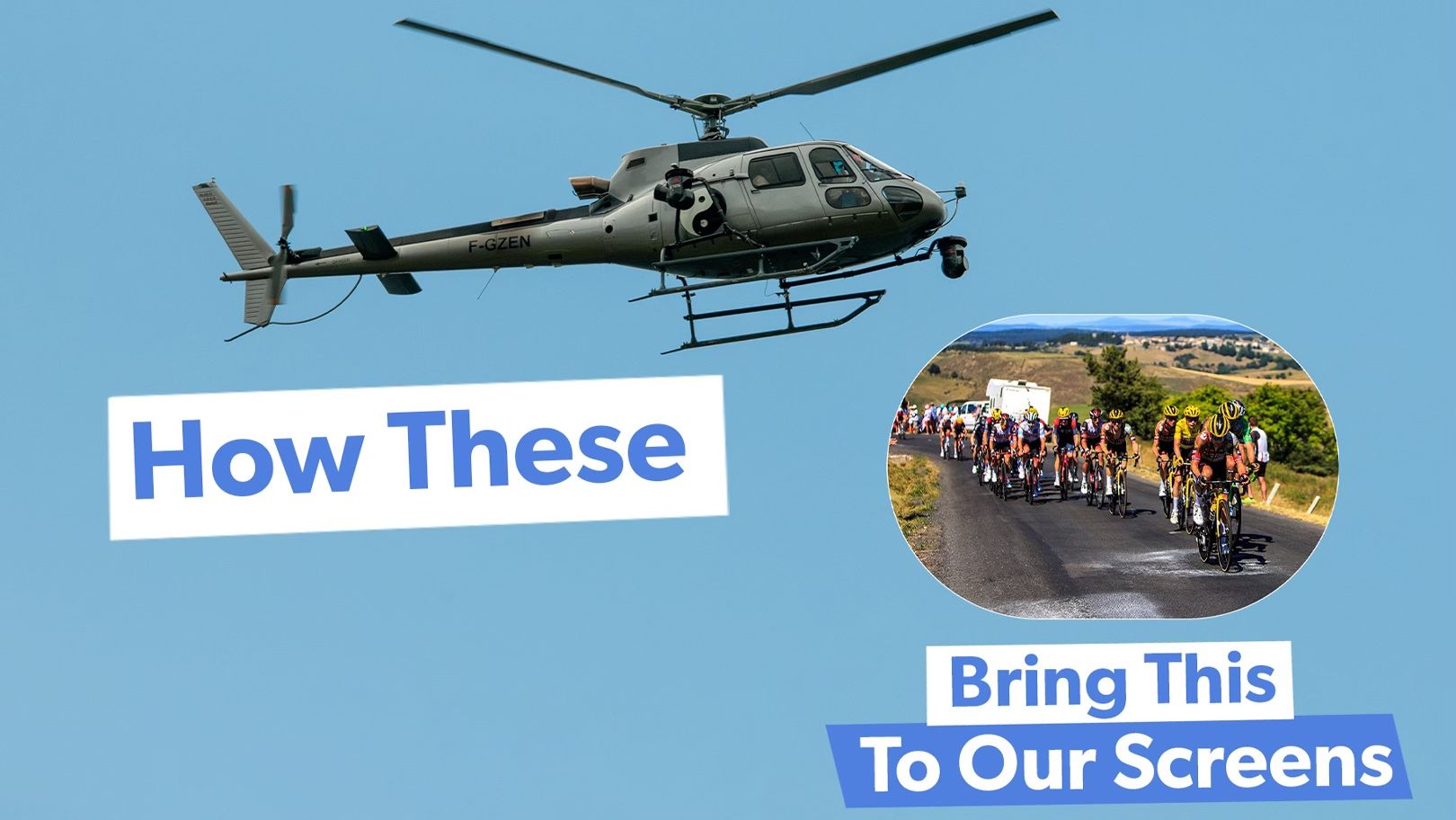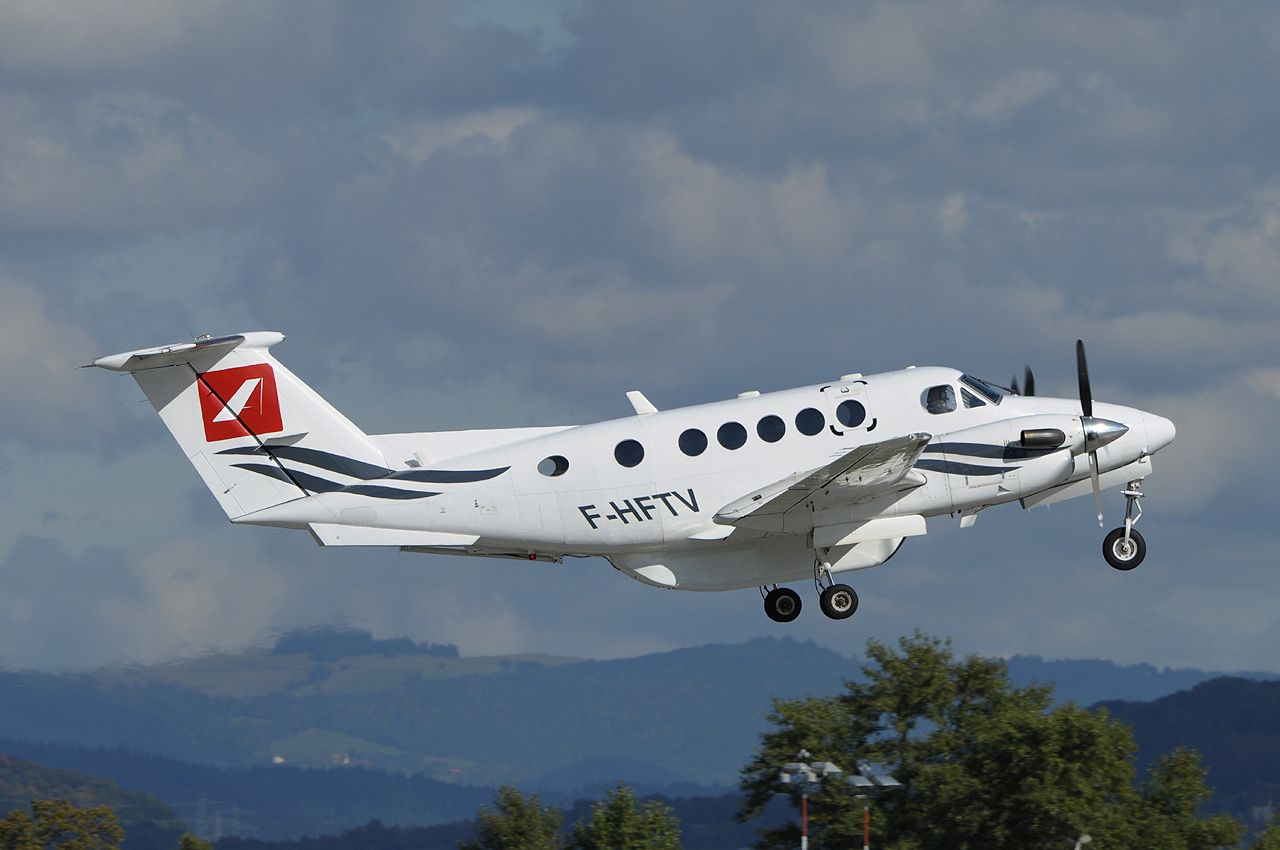Summary
- Aviation in the Tour de France broadcasts live coverage, supporting logistics & race strategy worldwide.
- Ito World Design Lab visualizes how aircraft relay live camera feeds to broadcast the race.
- Helicopters and planes, including the Beechcraft 200 Super King Air, are essential for capturing the event.
Aviation plays an essential role in bringing the excitement and grandeur of the Tour de France to a global audience. This world-famous cycling event, which takes place over three weeks in July, is a highlight of the summer when the skies above France become a bustling hub of activity.
Fleets of helicopters and airplanes gather to capture every moment of the thrilling competition. These aircraft are equipped with cutting-edge technology, ensuring viewers worldwide can experience the cyclists’ intense competition and sheer endurance.
Photo: Airbus
These aircraft are crucial for capturing the spectacle of the race as it winds through towns, lush countryside, and challenging mountain terrain. This airborne fleet provides live coverage for fans worldwide and supports the logistics of the race by delivering up-to-date aerial views essential for race strategy and safety.
Aviation’s involvement adds a dynamic layer to how the race is experienced, turning the Tour de France into not just a test of endurance and skill for the cyclists, but also a showcase of technological integration in sports broadcasting.
A look at the Tour de France flight route
Using data from Flightradar24, a service that tracks aircraft in real-time, Ito World Design Lab created a visualization of the aircraft maintaining position above the race. Live camera feeds from motorbikes and low-flying helicopters are transmitted to the relay aircraft above.
These aircraft then send the signals to nearby relay trucks. The signals are processed in a production truck, where the director decides which camera feed to broadcast. The selected feed is promptly transmitted via satellite for viewers to watch at home.
In 2017, Flightradar24 tweeted its tracking for Stage 3 of the Tour de France. This tweet caught the attention of Craig Taylor, the manager of the design services team at Ito World. Ito World enhances transit data visualization and integrates it into meaningful representations. Seeing Flightradar24’s data, Taylor seized the opportunity to innovate. He envisioned combining the live tracking data of the aircraft from Flightradar24 with a dynamic visualization of the riders’ positions on the racecourse.
This integration aimed to deliver a more holistic and engaging view of the race by showing the competitive positions of the cyclists and tying in the logistical and operational aspects of the race through the aircraft’s journey. This provides fans, viewers, and analysts alike with a comprehensive picture of the Tour de France, blending the physical race on the ground with the aerial support that plays a crucial role in the event’s execution.

Related
Want To Track A Flight? Here’s How
Travelers can track multiple flights across different airlines and receive real-time updates on flight information online or using apps.
Aircraft that make it possible
The Beechcraft 200 Super King Air is generally used for television relay flights. When on station, an antenna folds down from the aft fuselage collecting camera signals. The fixed-wing aircraft operate on two levels, one at about 10,000 feet and a second level between 20,000 and 25,000 feet. Helicopters are often used in the Tour de France as relay aircraft flying closer to the race, typically up to 5,000 feet.
Regulations have been established to manage the skies effectively and ensure the race unfolds smoothly, including designated flight paths carefully coordinated with the race’s schedule to avoid disruptions. Temporary helipads have been installed strategically as an innovative measure to enhance the event’s dynamics.
These helipads function as pit stops, allowing aircraft to refuel. This addition not only introduces an extra layer of strategy and excitement but also demands more precision and planning from the participants, making the race even more thrilling and engaging for competitors and spectators.
From a helicopter, broadcasters can track every movement of the race, capturing beautiful French landscapes. To reduce its carbon footprint, sustainable aviation fuel (SAF) has become a Tour de France requirement.
In 2023, HBG’s helicopters broadcasting the Tour de France began using SAF. HBG is a family-owned group with various brands, including Mont Blanc Hélicoptères and Hélicoptères de France. According to a press release from Airbus, HBG deploys up to nine helicopters to meet the demands of the Tour de France and other significant sports events.
Photo: Airbus
Airbus said, “Using 100% SAF can reduce CO2 emissions by 80% on average throughout its life cycle, with no change in consumption or power output compared with traditional fuel.”
Aviation plays a critical role in the Tour de France, enabling global broadcasting and logistical support for the famed cycling event. Throughout July, helicopters and airplanes provide live footage and aerial views crucial for strategy and safety, enhancing the viewer’s experience with dynamic coverage.
Data visualization by Ito World Design Lab highlights this coordination, showing how camera feeds from various aircraft are processed and broadcast. To minimize environmental impact, sustainable aviation fuels (SAF) are used, significantly reducing CO2 emissions without affecting performance, as demonstrated by HBG’s helicopter fleet in 2023.
Aircraft, including the Beechcraft 200 Super King Air and twin-engine Ecureuils operated by France Télévisions, are key to capturing the race and beautiful French landscapes, marking the Tour de France not only as a cycling challenge but also as an achievement in sports broadcasting and environmental sustainability.

Related
A Brief Guide To The Role Of Aviation In Film & TV Production
Have you seen any of these prominent films featuring airliners?




